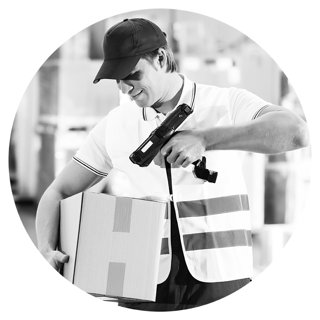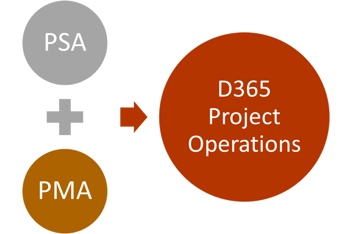Logistics Firms Can Streamline & Save With Digital Technology
 Logistics companies can streamline their operations whilst making significant savings if they invest in digitisation.
Logistics companies can streamline their operations whilst making significant savings if they invest in digitisation.
A recent report by co-written by DHL, entitled ‘Internet Of Things in Logistics’, outlined a number of ways that logistics companies can use digital technology to fine tune and enhance their operations.
In this this article we unpack each of these technologies and analyse their benefits.
| Warehouse |
Technology |
Features |
Benefits |
| Smart Inventory Management |
The widespread adoption of palette or item tagging is helping many logistics firms to optimally utilise warehouse storage space and speed-up replenishment. |
These tags significantly reduce item retrieval, processing, and delivery times. And, consequently increase margins and customer satisfaction. |
|
| Damage Detection |
Upon items being delivered or dispatched from a warehouse, their dimensions can be recorded in the warehouse management system (WMS). |
Cameras and scanners can then be used to detect any alterations or damage to the packaging / items upon arriving at their next destination. |
|
| Real-Time Visibility |
Tags transmit signals about items’ locations and alert warehouse managers if items are misplaced or if stock is low. |
Using this technology, the supply chain can be automatically notified to ensure that you never unintentionally run out of stock. |
|
| Accurate Inventory Control |
Similarly, outbound gateway scanners that the right items are leaving for delivery in the right order. |
Your WMS is automatically updated to ensure that your stock levels are in line with your needs. |
|
| Optimal Asset Utilisation |
Warehouse managers can use scanners to monitor all of their mechanical assets in real time and identify optical tasks and times to use those assets. |
Assets like conveyor belts and forklifts can be used in the most energy and time efficient ways to save on costs. |
|
| Predictive Maintenance |
Connected asset scanners can also be used to track the status of mechanical functionality by monitoring their output and temperature. |
This can alert managers to the lifecycle stage of the machine ensuring that services are not interrupted by malfunctions and preventing damage to valuable products. |
|
| Health & Safety |
Pressure sensors, radar, and cameras can be connected to a forklift to scan the environment in which it operates for hidden objects that may cause a collision. They also alert the driver about weight limits. |
Protection against accidents at work benefits both employees and employers. Increasing safety can save companies a lot of money. |
|
| Smart Warehouse Energy Management
|
This allows your WMS to automatically dim lighting according to activity. |
This can create a huge cost of energy saving. On average warehouse lighting accounts for 70% of energy costs. |
|
| Freight
|
Location & Condition Monitoring |
Telematics sensors in trucks and item tags transmit data on the location and condition of items. |
These sensors can detect damage and theft and pinpoint the location and time of any incident. |
| Fleet & Asset Management |
Sensors can monitor how often a truck or container is in use. |
This data can be used to optimise utilisation in terms of spare capacity in vehicles on particular routes. |
|
| Predictive Asset Lifecycle Management |
This solution leverages analytics to predict asset failures and automatically schedule maintenance checks. |
Identify material degradation or damages in real-time to ensure that safe operational machinery is being used and operations are not interrupted. |
|
| End-To-End Supply Chain Risk Management |
Disruptions to regular supply chain routes are monitored on a global scale. |
When a disruption occurs appropriate mitigation strategies are triggered automatically helping to avoid delays in the supply chain. |
|
| Home Delivery |
Optimized Collection From Mail Boxes |
Sensors monitor mail boxes outside businesses and homes in real time and alert drivers when to collect from that box. |
Customers do not have to be present when their items are collected. They are alerted via email or text upon collection. |
| Automatic Replenishment & Anticipatory Shipping |
Connected to fridges in smart homes and commercial kitchens, sensors detect when food supplies are running low. |
Food is then automatically ordered online speeding up sales and saving the customer time. |
|
| Monetise & Optimise The Return Trip |
Use technology to connect delivery people with surrounding vehicles and individuals. |
Customers take a snap of the parcel they want delivering and send it to the delivery person with an address. The delivery person collects it and delivers it and payment is made online. |
|
| Next-Generation Visibility |
Low cost printed labels will include all of these sensors in the future. |
This will bring down the cost of digitisation without compromising the quality of the data captured. |
How can I get ‘buy-in’ for digital transformation from key stakeholders?
- You will need to establish a concise, standardised, approach for the use of unique identifiers or ‘tags’ for various types of assets that your company handles.
- You must establish trust and ownership of data so successes and failures can be monitored. Informed decisions can be then be made and justified.
- Hold workshops and training with key stakeholders and staff so they understand and embrace the potential for change.
- Digitisation will make and save your company a lot of money. It will definitely be worth the initial installation and maintenance costs.
If you would like to join the discussion on enabling digital transformation attend Crimson’s Innovation Conference. Click the image to register for FREE.

